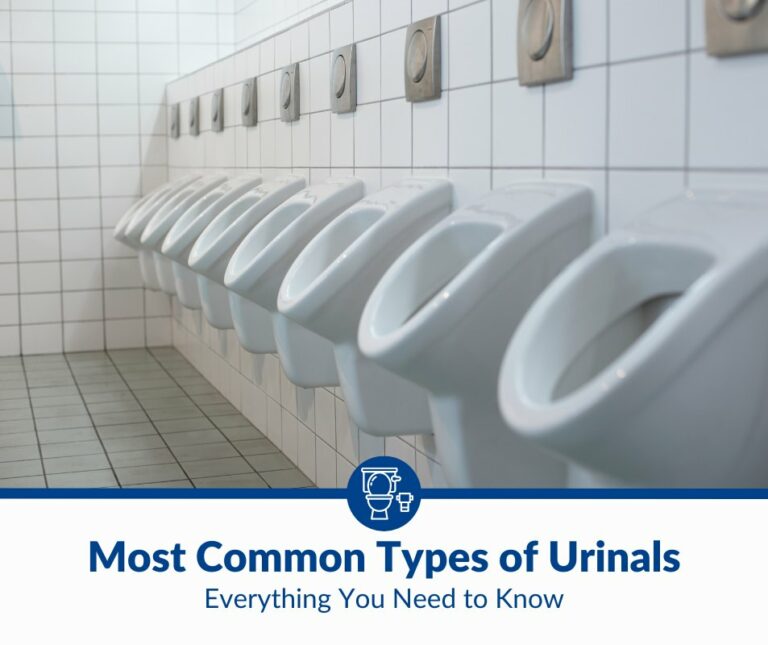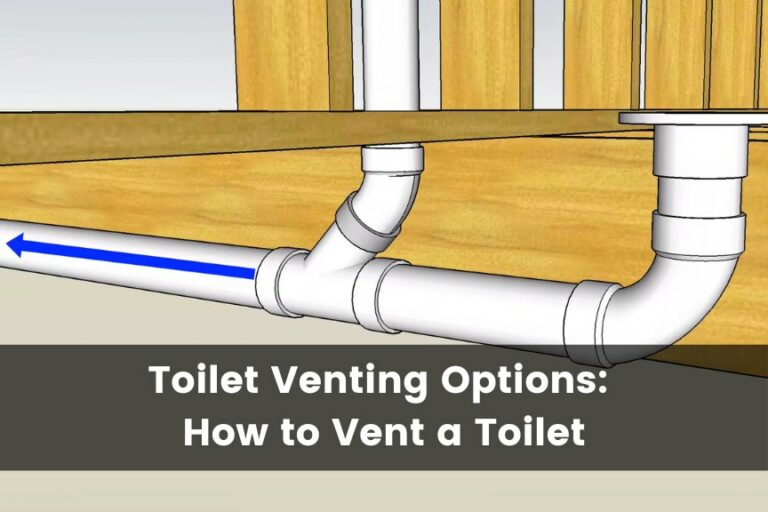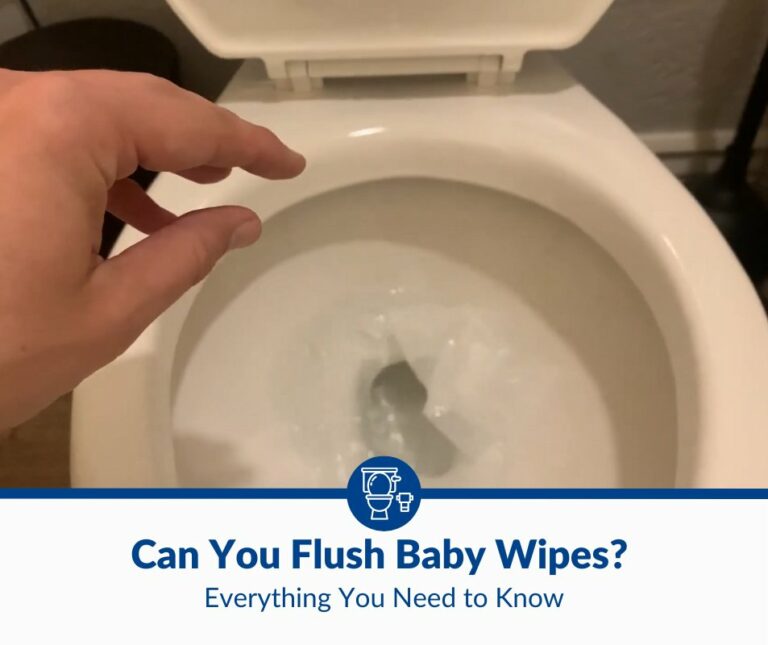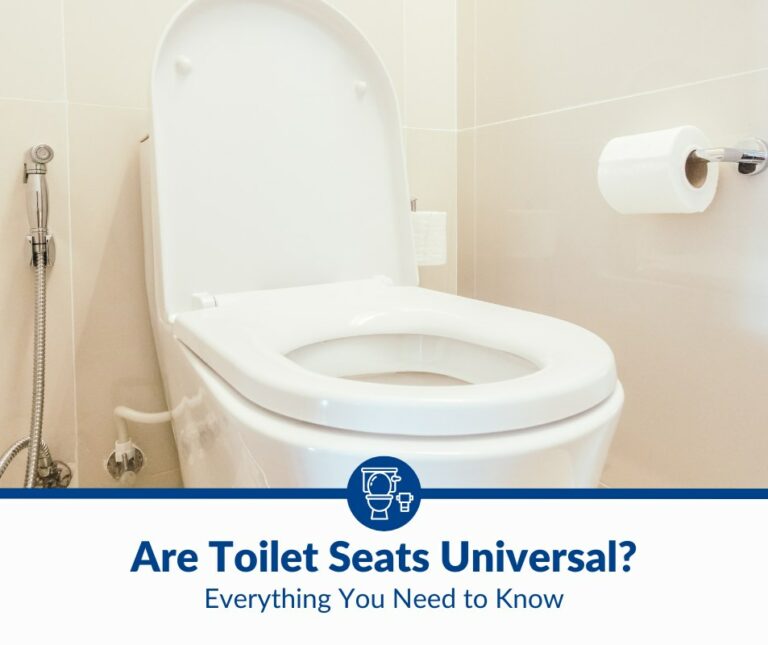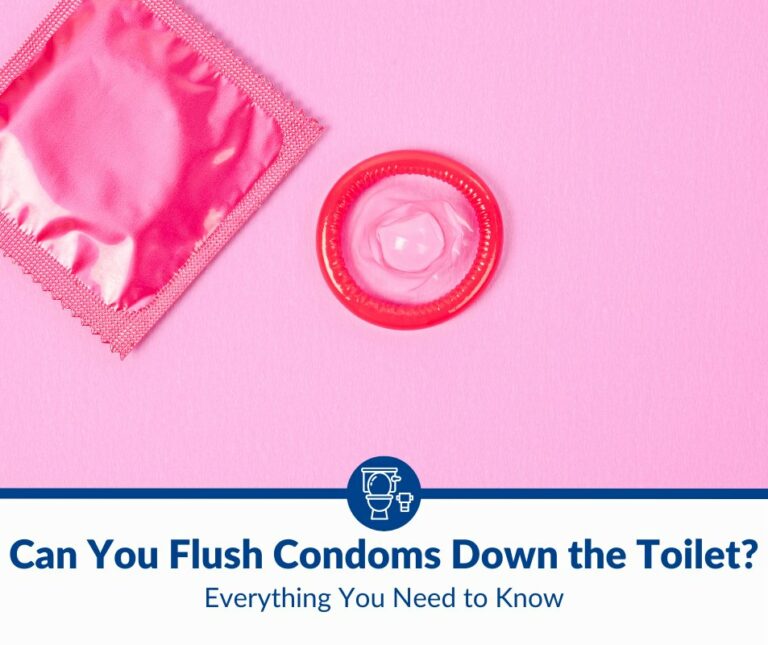Toilet Bubbles When Flushed?: Common Issues and Fixes
It’s normal for a toilet to produce a small number of bubbles when you flush, but when there are more bubbles than usual (and gurgling noises), it can be concerning. While it may be inconvenient and even embarrassing, there’s no need to worry. There are various reasons this might happen and several ways to address it.
Toilet bubbles when flushed may be due to a clogged drain. To resolve this, use a plunger to clear the obstruction or blockage. Other causes include a leaky toilet, sewer gas, incorrect installation, or issues with the municipal sewer line.
In this article, I’ll explore the common causes of toilet bubbles when you flush and provide some simple solutions for fixing them. So, grab your toolkit, and let’s get started!
1. Clogged Drain
A clogged drain can cause toilet bubbles when you flush if the blockage is in the drainpipe connecting the toilet to the main sewage line. When you flush the toilet, water and waste travel through a drainpipe into the main sewage line.
If the drainpipe is blocked, the water and waste flow may be impeded, causing a build-up of pressure in the drainpipe. This pressure can force air back up through the toilet, resulting in bubbles in the toilet bowl when the toilet is flushed.
A blocked drain can cause bubbles in the toilet upon flushing and also lead to other issues, such as:
- A slow-flushing toilet
- A sewage backup into the toilet bowl
How To Fix
If bubbles appear in your toilet bowl after flushing, try these steps to clear the drain:
- Try to clear the blockage with a plunger. Place the plunger over the opening at the base of the toilet bowl and press down firmly, using a back-and-forth motion to loosen the obstruction. If the plunger doesn’t work, use a toilet auger—a long, flexible rod with a hook on the end that can be used to remove blockages.
- If the plunger and auger don’t help, remove the toilet to access the drainpipe. To do this, remove the toilet seat and lid, and remove the screws from the toilet’s base. Use a wrench or screwdriver for this. Lift up the base to detach it from the bowl. Once removed, reach down into the drainpipe and manually clear out any blockages or use a wire brush.
- Inspect the drainpipe. Use a flashlight to inspect the drainpipe and check for any visible blockages. If you see a blockage, remove it using pliers or a similar tool.
- If there are no visible blockages or if the blockage is too difficult to remove, use a chemical drain cleaner. Follow the instructions on the package carefully, and wear protective gloves and goggles when using the drain cleaner.
- Replace the toilet and turn on the water supply. Flush the toilet a few times to see if the bubbles have disappeared. If the issue persists, you may have a more serious problem with your plumbing system. In this case, contact a plumber as soon as possible to resolve the issue.
If you’re wondering what an auger looks like, I recommend the RIDGID Model K-3 Toilet Auger (available on Amazon.com). This auger is the tool you need, as it’s designed to clear even the toughest toilet clogs. It’s easy to use and can negotiate water-conserving toilets with its vinyl protective guard extending up to the trap.
If you’re looking for a green chemical drain cleaner, consider the Green Gobbler Drain Clog Dissolver (available on Amazon.com). It’s an effective drain and toilet cleaner that dissolves hair, soap scum, flushable personal care wipes, and many other organic materials. In addition to being safe for septic systems, its formula doesn’t contain bleach or sodium hydroxide.
It’s important to note that fixing a clogged drain can be challenging and potentially dangerous, especially if you’re unfamiliar with plumbing. It’s best to call a professional plumber if you’re unsure how to proceed or if your efforts don’t seem effective.
2. Clogged Main Line
If you’re experiencing toilet bubbles when you flush, the blockage may be located in the main drain line, which collects wastewater from multiple drainpipes and transports it to the municipal sewer. If the blockage occurs further down the main line, it can cause multiple problems.
A blockage in the main line can cause your drain pipes to become clogged and result in toilet bubbles when you flush. It’s easy to distinguish a main line blockage from a drain pipe blockage, as the latter only affects a single room or floor in your home, while a blockage in the main line impacts your entire residence.
Symptoms of a clogged main line may include:
- Backed-up fixtures, including sinks, toilets, bathtubs, and showers.
- Discolored, smelly leakages from fixtures, including sinks and toilets.
- Wet patches in the lawn across the main line path.
How To Fix
Fixing a clogged main line isn’t as easy as fixing a clogged drainpipe, as it’s located further down the system.
You’ll need the following tools to unclog a blocked main line:
- Heavy-duty waterproof gloves and shoes
- An extra-long garden hose
- A plumbing snake
- A pipe wrench
Once you have the things you need, do the following:
- Find the location of the main line clog to determine whether to address it from the sewer clean-out or another spot. Determining the position of a clog will also determine whether or not you need to contact an expert plumber.
- Determined if it can be accessed through the clean-out cap and remove it using a pipe wrench. Remember to put on water-resistant gloves and boots, as there may be a water build-up behind the clog that could come out with force when you open the drain cap.
- Allow the water to flow back and exit through the opening. Be prepared for any excess water, and allow the water to flow out before attempting any further steps.
- Use a plumbing snake to enter the main line through the clean-out cap opening. These tools can often be rented at hardware stores. Insert the snake into the drainpipe slowly, continuing until you feel resistance.
- Use the snake to break up the obstruction. When the resistance eases, it likely means that the clog has been cleared. The water build-up in the pipe should also drain away once the clog is gone. There may be multiple clogs or stubborn clumps that need to be cleared, so continue working the snake down the pipe until the blockage is fully removed.
- After removing the blockage, run water through the drainpipe with the auger still inside to verify that the pipe is debris-free. You can remove the snake and rinse it off if there’s no resistance when you run the water.
- Replace the drain cap. Make sure you don’t over-tighten it.
The video below explains more about clearing a clogged sewer line. It can also provide more information about the common causes of sewer line clogs and how to handle them:
If the main line is still clogged and the above steps are too complex or require tools you don’t have, consult with a plumber for assistance. A plumber has the expertise and equipment to clear the blockage and restore proper function to your plumbing safely and effectively.
3. Leaky Toilet
A leaky toilet can cause toilet bubbles when flushed for various reasons:
- The leak is allowing air to enter the toilet’s water supply line. When you flush the toilet, the rush of water from the tank forces the air in the line to be released, which can create bubbles in the toilet bowl.
- The leak is causing water to be continuously released into the toilet bowl, creating a steady stream of bubbles.
- The leak could be causing the water level in the toilet bowl to be too low, which can cause the toilet to “gulp” air when it is flushed. This can also create bubbles.
There are several potential causes of a leaky toilet. Some common ones include:
- A faulty or damaged toilet flapper.
- A worn-out toilet fill valve.
- A cracked toilet tank.
- Incorrectly installed or poorly fitting toilet parts.
- Clogged or obstructed drain pipes.
How To Fix
Problems with a leaking toilet can usually be fixed by doing one or more of the following:
- Check the toilet flapper: If the toilet flapper isn’t sealing properly, it can cause water to leak from the tank into the bowl. To check the flapper, lift the lid of the toilet tank and check for signs of wear or damage. If the flapper is damaged or worn, it will need to be replaced.
- Replace the toilet fill valve: If the toilet fill valve isn’t functioning properly, it can cause the tank to overflow and leak into the bowl. To replace the fill valve, turn off and drain the water supply line to your toilet, and remove the old valve. Follow the instructions provided with the new valve to install it.
- Repair or replace a cracked toilet tank: If the toilet tank is cracked, it will need to be repaired or replaced. In some cases, the crack can be repaired using a toilet tank repair kit, but if the damage is extensive, you may need to replace it.
- Check for incorrectly installed or poorly fitting toilet parts: If the toilet wasn’t installed correctly or if the parts don’t fit together properly, it can cause leaks. In this case, you’ll need to have a plumber to adjust or replace the parts.
4. Sewer Gas
Toilet bubbles when you flush may also be caused by sewer gas. This is a mixture of various gasses produced by the breakdown of organic matter in the sewer system. The gasses in sewer gas can include hydrogen sulfide, which has a rotten egg smell, and methane, which is flammable.
When sewer gas is present in the toilet bowl, it can cause bubbles to form when the toilet is flushed. This can happen for various reasons:
- Blockage in the plumbing: If there is a blockage in the plumbing system, it can cause a build-up of gasses in the pipes, which can then be released into the toilet bowl when the toilet is flushed.
- Dry P-trap: A P-trap is a plumbing fixture that prevents sewer gasses from entering the home. Water flowing through a P-trap fills the space between the drainpipe and the toilet bowl with water. This keeps sewer gasses from rising up into your bathroom. If there isn’t enough water in the toilet bowl when you flush, bubbles can form where there are gaps between the toilet’s pipe and trapway.
- Venting issues: Toilet plumbing systems are designed to vent sewer gas to the outside of the building. If the venting system isn’t working properly, it can cause sewer gas to build up in the plumbing system, which can then be released into the toilet bowl when flushed.
How To Fix
To fix toilet bubbles due to sewer gas, try the following steps:
- Check if the toilet is correctly vented. A toilet must be vented to allow sewer gasses to escape. If the vent is blocked or not functioning properly, it can cause bubbles when water flows into the bowl and mixes with the gasses.
- Check the toilet’s P-trap. Carefully inspect the P-trap for any blockages or obstructions that may be causing the toilet bubbles. Common causes of blockages in the P-trap include accumulated hair, soap scum, and other debris.
- Check the toilet’s seal. A worn-out seal between the toilet and floor can let sewer gasses (such as hydrogen sulfide, carbon dioxide, and methane) into your home. If this is the problem—or there’s a broken flange connecting the pipe to the tank—you’ll need to replace these parts.
5. Incorrect Installation
If the toilet wasn’t installed correctly, it could cause bubbling when you flush.
Installing a toilet requires more than simply attaching the toilet bowl to the water supply and sewer drains. It’s a technical task that requires knowledge and skill, such as using spacers to properly secure the toilet to the drain hole and ensure proper venting.
An inexperienced person may not be familiar with these technical details. Leakages and blockages are more likely to occur when a toilet system is incorrectly installed.
How To Fix
Here are a few things you can check:
- Securely anchor the toilet to the floor.
- Check the seals around the toilet’s base and ensure they’re not causing leaks.
- The water level in the toilet tank should be set to approximately 1/2 inch (13 mm) below the top of the overflow tube.
- Ensure the flapper valve closes completely to prevent water flow into the bowl.
- Inspect the toilet for damage or wear and consider replacing it if necessary.
6. Excess Minerals in the Toilet System
Occasionally, the source of gurgling or bubbling in a toilet may not be a blockage but rather an excess of minerals in the bowl such as:
- Calcium
- Iron
- Magnesium
This is more likely to happen if you live in an area with hard water, which has higher mineral levels. Over time, limescale (a mineral build-up) can accumulate and cause a sediment build-up in the tank, resulting in interference with the float valve’s function.
You probably have a mineral build-up in your toilet if you can see yellow, grey, or light brown stains that are tough to remove with normal toilet cleaning.
In particularly severe cases, a dark moss-like build-up may be present, which warrants immediate attention as it can impede water flow into the tank.
How to Fix
- Use a soft to medium-bristled brush and a bleach solution to thoroughly clean the tank’s inside. If you have a mineral build-up in the toilet bowl, apply a heavy-duty toilet cleaner and allow it to settle in the bowl overnight.
- Inspect the inlet valve for any accumulation of sediment. Cleaning this area can be challenging, and if there is a significant buildup, it may be necessary to replace the valve.
6. Problems With the Municipal Sewer Line
The municipal sewer system is responsible for carrying the waste from your toilet to be treated. This system is made up of a network of underground pipes.
If the main sewer system becomes blocked, it can cause a sewer backup, resulting in clogged drain lines in individual homes. The backup will clog multiple fixtures but often starts with toilets, bathtubs, and showers.
If you suspect the municipal sewer line is creating a backflow, consult with your neighbors to establish if they’re experiencing a similar problem. In this case, notify your municipal sewerage department or water company.
How To Fix
Thankfully, the town is responsible for fixing municipal sewer line issues. These problems are typically considered emergencies because they have the potential to cause significant damage.
For example, if the main sewer line is damaged, it can lead to sewage leaks and backups, which can be costly for the municipality and create a mess in homes. Therefore, your municipality will likely want to take rapid action.
Summary
To summarize, toilet bubbles when you flush is a common problem that can have several causes, such as:
- A clogged toilet
- A faulty flapper valve
- An obstruction in the vent pipe
To determine the most effective solution, it’s important to identify the root cause.
In some cases, you may need to call a plumber for more complex repairs. By learning about the common causes of toilet bubbles and how to fix them, you can maintain your toilet and prevent expensive repairs in the future.



